Ditapis dengan

A Commentary on the Council of Europe Convention on Action against Traffickin…
This comprehensive Commentary provides the first fully up-to-date analysis and interpretation of the Council of Europe Convention on Action against Trafficking in Human Beings. It offers a concise yet thorough article-by-article guide to the Convention’s anti-trafficking standards and corresponding human rights obligations. This Commentary includes an analysis of each article’s drafting his…
- Edisi
- -
- ISBN/ISSN
- 978-1-78811-156-0
- Deskripsi Fisik
- 553 hlm.
- Judul Seri
- -
- No. Panggil
- -

Protecting the Rights of People with Autism in the Fields of Education and Em…
The Council of Europe and the European Union (EU) have not developed ad hoc legal rules or hard law instruments specifically aimed at protecting the rights of people with autism. At European regional level, the special situation and needs of individuals with autism find recognition and protection within the wider legal framework concerning the rights of persons with disabilities as well as with…
- Edisi
- -
- ISBN/ISSN
- 978-3-319-13791-9
- Deskripsi Fisik
- 202 hlm.
- Judul Seri
- -
- No. Panggil
- -
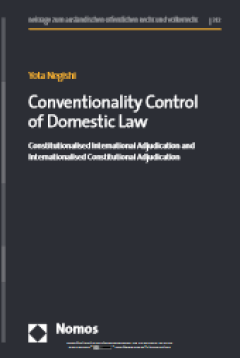
Conventionality Control of Domestic Law: Constitutionalised International Adj…
Through gaining lessons from the doctrine of constitutionality control, the book deals principally with conventionality control achieved by judicial adjudicators. This monograph fills the gap in comparative international human rights law by analysing the practice of conventionality control in Europe and Latin America. Based on the empirical data, the author normatively envisions a ‘trapezium�…
- Edisi
- -
- ISBN/ISSN
- 978-3-7489-2983-3
- Deskripsi Fisik
- 252 hlm.
- Judul Seri
- -
- No. Panggil
- -
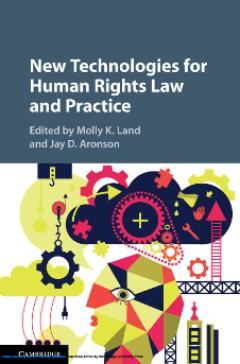
New Technologies for Human Rights Law and Practice
New technological innovations offer significant opportunities to promote and protect human rights. At the same time, they also pose undeniable risks. In some areas, they may even be changing what we mean by human rights. The fact that new technologies are often privately controlled raises further questions about accountability and transparency and the role of human rights in regulating these ac…
- Edisi
- -
- ISBN/ISSN
- 978-1-316-83895-2
- Deskripsi Fisik
- 334 hlm.
- Judul Seri
- -
- No. Panggil
- -

International Humanitarian Law in Areas of Limited Statehood: Adaptable and L…
Areas of limited statehood, in which the territorial State lacks effective control, either completely or in part, challenge International Humanitarian Law in various ways. This volume explores if and how the law adapts to these challenges on the basis of mainly two legal issues: detention and investment protection in (non-)international armed conflict. Does a sufficient legal basis exist for th…
- Edisi
- -
- ISBN/ISSN
- 978-3-8452-8955-7
- Deskripsi Fisik
- 251 hlm.
- Judul Seri
- -
- No. Panggil
- -
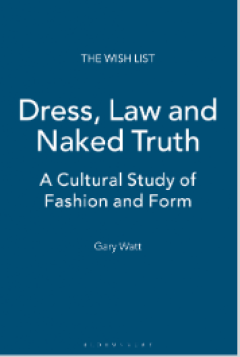
Dress, Law and Naked Truth: A Cultural Study of Fashion and Form
Why are civil authorities in so-called liberal democracies affronted by public nudity and the Islamic full-face ‘veil’? Why is law and civil order so closely associated with robes, gowns, suits, wigs and uniforms? Why is law so concerned with the ‘evident’ and the need for justice to be ‘seen’ to be done? Why do we dress and obey dress codes at all? In this, the first ever study dev…
- Edisi
- -
- ISBN/ISSN
- 978-1-4725-0045-8
- Deskripsi Fisik
- 193 hlm.
- Judul Seri
- -
- No. Panggil
- -
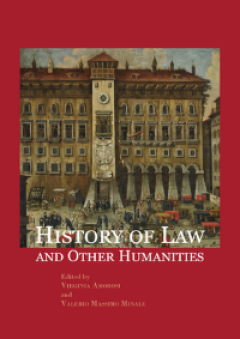
History of Law and Other Humanities: Views of the Legal World Across the Time
The collection of thirty-five essays presented here examines the links forged through the ages between the realm of law and the expressions of the humanistic culture. The essays are organized into sections of ten chapters based around ten different themes. Two main perspectives emerged: in some articles the topic relates to the conventional approach of ‘law and/in humanities’ (iconography, …
- Edisi
- -
- ISBN/ISSN
- 978-84-1324-239-2
- Deskripsi Fisik
- 594 hlm.
- Judul Seri
- -
- No. Panggil
- -

Human Blood Group Systems and Haemoglobinopathies
- Edisi
- -
- ISBN/ISSN
- 978-1-83881-969-9
- Deskripsi Fisik
- 236 page
- Judul Seri
- -
- No. Panggil
- -
- Edisi
- -
- ISBN/ISSN
- 978-1-83881-969-9
- Deskripsi Fisik
- 236 page
- Judul Seri
- -
- No. Panggil
- -

Human Papillomavirus and Related Diseases : From Bench to Bedside - A Clinica…
- Edisi
- -
- ISBN/ISSN
- 978-953-51-6729-7
- Deskripsi Fisik
- -
- Judul Seri
- -
- No. Panggil
- -
- Edisi
- -
- ISBN/ISSN
- 978-953-51-6729-7
- Deskripsi Fisik
- -
- Judul Seri
- -
- No. Panggil
- -
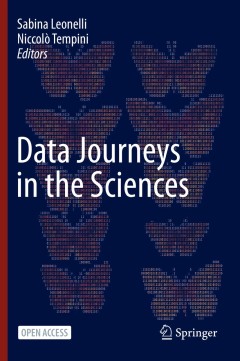
Data Journeys in the Sciences
This groundbreaking, open access volume analyses and compares data practices across several fields through the analysis of specific cases of data journeys. It brings together leading scholars in the philosophy, history and social studies of science to achieve two goals: tracking the travel of data across different spaces, times and domains of research practice; and documenting how such journeys…
- Edisi
- -
- ISBN/ISSN
- 978-3-030-37177-7
- Deskripsi Fisik
- XVII, 412p
- Judul Seri
- -
- No. Panggil
- -
 Karya Umum
Karya Umum  Filsafat
Filsafat  Agama
Agama  Ilmu-ilmu Sosial
Ilmu-ilmu Sosial  Bahasa
Bahasa  Ilmu-ilmu Murni
Ilmu-ilmu Murni  Ilmu-ilmu Terapan
Ilmu-ilmu Terapan  Kesenian, Hiburan, dan Olahraga
Kesenian, Hiburan, dan Olahraga  Kesusastraan
Kesusastraan  Geografi dan Sejarah
Geografi dan Sejarah